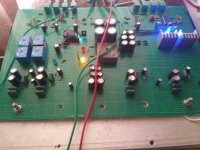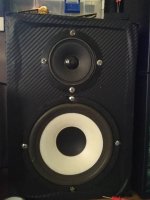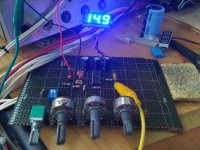hi members
Being a fan of active crossovers and biamped speakers ... living many years with 2 way active speakers ... thought of being time for upgrade to 3 way active speaker system soon. Can anyone give me feedbacks of advantages of 3 way active speaker over 2 way speaker? such as sound quality improvements? i would like to hear from all members opinion. And can also someone recommend the size of woofer, mid for 3 way speaker? currently 2 way is 6inch Midbass speaker and 3.5inch tweeter (Paper cone). System low end is supported with a 12inch ported subwoofer.
Currently everything is in biamp system(Linkwitz Riley 2th order) means 4x LM1875 for the main speakers. So to triamping is matter of include extra active crossover and extra amplifier.
Opinions and feedbacks very much welcomed. Thx
Being a fan of active crossovers and biamped speakers ... living many years with 2 way active speakers ... thought of being time for upgrade to 3 way active speaker system soon. Can anyone give me feedbacks of advantages of 3 way active speaker over 2 way speaker? such as sound quality improvements? i would like to hear from all members opinion. And can also someone recommend the size of woofer, mid for 3 way speaker? currently 2 way is 6inch Midbass speaker and 3.5inch tweeter (Paper cone). System low end is supported with a 12inch ported subwoofer.
Currently everything is in biamp system(Linkwitz Riley 2th order) means 4x LM1875 for the main speakers. So to triamping is matter of include extra active crossover and extra amplifier.
Opinions and feedbacks very much welcomed. Thx
You do not have 2-way, you have 3-way already.
Consider upgrading lm1875 to lm3886.
?? how do you mean by 3 ways? my current main speaker is only 2 way setup .. 😀
To perhaps address your question more directly... in my opinion, the only reason you'd want to go 3-way (forgetting about your sub) verses 2-way would be for higher output.
If your system has the output you need/use/want then I'd say consider yourself done.
When I went from 3-way passive to 2-way active, I mistakenly thought the signal delay that was added to the (all horn) system accounted for this big increase in intelligibility that I was hearing.
I made a comment about that and someone who knew more than I did (I was new to actives and 2-way for that matter) anyway, explained that the increase in intelligibility that I was hearing was the loss of a crossover point and I could verify it myself by doing such & such... (I did and was comfortable that he was 100% correct)
So in my view, the goal should be the fewest drivers/crossover points in the system to get you where you want to be. Adding more just chops up the sound.
If your system has the output you need/use/want then I'd say consider yourself done.
When I went from 3-way passive to 2-way active, I mistakenly thought the signal delay that was added to the (all horn) system accounted for this big increase in intelligibility that I was hearing.
I made a comment about that and someone who knew more than I did (I was new to actives and 2-way for that matter) anyway, explained that the increase in intelligibility that I was hearing was the loss of a crossover point and I could verify it myself by doing such & such... (I did and was comfortable that he was 100% correct)
So in my view, the goal should be the fewest drivers/crossover points in the system to get you where you want to be. Adding more just chops up the sound.
oh i see ... i initially thought that 3 way speaker may have the potential to improve the midrange hence better vocal in movies ... music is quite satisfactory but movies i am still not satisfied with the vocals ... that makes me consider whether to upgrade the mains to 3 ways ... i am done with the subwoofer since it satisfied what i want (bass down to 30Hz) after some equalization (Powered using TDA8950)
And the sub makes 3 😉 especially if you high pass the 2 way.......
FYI my sub only operates around 30Hz to 80Hz ...
You may find intelligibility of voices would improve if you relieved the mid bass of those lower frequencies
I noticed quite an improvment in my MTM's when I actively crossed in my 10" vifa woofers at 270Hz. Part of that is the extra bass, since the MTM's have 5" drivers in small (5L) sealed enclosures, but the other appreciable difference was in better midrange clarity, now that the little 5" drivers weren't trying to cover those lower frequencies any more.
Crossover is 4th order bessel acoustic slope (custom active filter slopes to get the desired acoustic rolloff) Couldn't be happier with the improvement, (although the original MTM's were designed with the cross to the 10" vifas in mind from the begining, it took a while to get there) 🙂
Tony.
Crossover is 4th order bessel acoustic slope (custom active filter slopes to get the desired acoustic rolloff) Couldn't be happier with the improvement, (although the original MTM's were designed with the cross to the 10" vifas in mind from the begining, it took a while to get there) 🙂
Tony.
Last edited:
oh i see ... i initially thought that 3 way speaker may have the potential to improve the midrange hence better vocal in movies ... music is quite satisfactory but movies i am still not satisfied with the vocals ... that makes me consider whether to upgrade the mains to 3 ways ... i am done with the subwoofer since it satisfied what i want (bass down to 30Hz) after some equalization (Powered using TDA8950)
Sure, why not. Upgrade is only upgrade if it is well executed. No matter how you count your ways.
I do not make distiction between music only or movies only, sound system if well done will work no matter what application.
If it does not, something is not right.
If it does not, something is not right.
There are huge benefits in a 3 way over a two way.
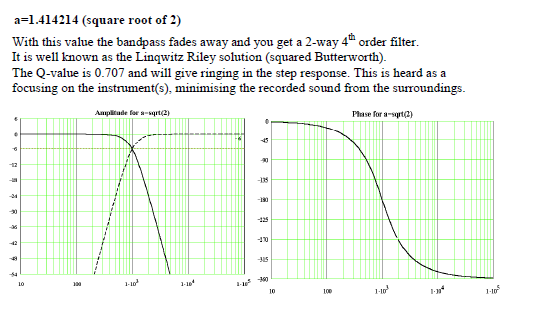
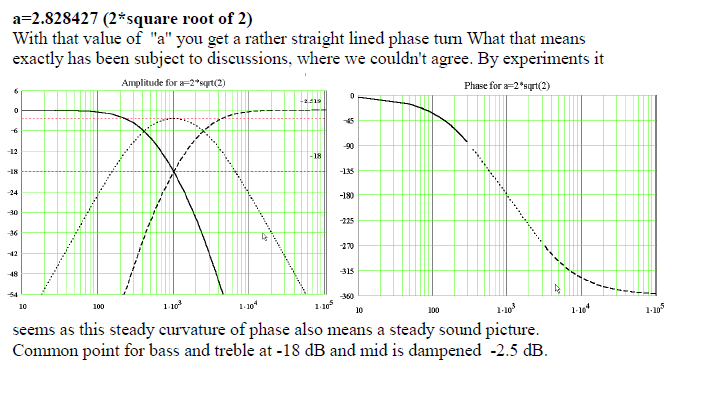
Lower distortion. Effortless loudness. Gentler filters. More optimised drivers in each frequency range. Better dispersion. It's the way to go. A good one actually sounds quite uninteresting. It's when the music gets loud you notice the lack of distortion and good dynamics.
Really a three way at its best is a great flat midrange, with some help at bottom (500Hz) and top (3kHz) from other drivers. Troels Gravesen talks about some of his design issues here:
ScanSpeak-3W-Discovery
Lower distortion. Effortless loudness. Gentler filters. More optimised drivers in each frequency range. Better dispersion. It's the way to go. A good one actually sounds quite uninteresting. It's when the music gets loud you notice the lack of distortion and good dynamics.
Really a three way at its best is a great flat midrange, with some help at bottom (500Hz) and top (3kHz) from other drivers. Troels Gravesen talks about some of his design issues here:
ScanSpeak-3W-Discovery
Not to argue...especially since I don't have the technical background to do so!!
None the less, I couldn't disagree more.
To take his (what to me are unqualified / unrestricted comments) one at a time:
Lower distortion: In my situation, my old passive 3-way speaker (Klipschorn) had something like four TIMES the distortion of it's 2-way (active in my case) replacement, the Jubilee.
Effortless Loudness: I'm not even going to worry about this one.....the 2-way Jubilee simply crushes the Khorn "at volume". Perhaps it's not a fair fight since it has a 2" throat verses 1" throat....but there were not restrictions put out on throat sizes so in this context, my 2-way active stomps my old 3-way passive
Gentler filters: Maybe...I don't know much about them. What I HAVE learned however, is the steeper the slope, the less (destructive) interference between the drivers and the cleaner the sound....sort of like "a veil has been lifted".
Again, not trying to argue.... just pointing out an example that clearly illustrates my points.
Now...downside with horns is they need to be really big to dig deep (these are really big) but, if you want really deep.... you need a subwoofer. So by some definitions, perhaps it's now a 3-way!
None the less, I couldn't disagree more.
To take his (what to me are unqualified / unrestricted comments) one at a time:
Lower distortion: In my situation, my old passive 3-way speaker (Klipschorn) had something like four TIMES the distortion of it's 2-way (active in my case) replacement, the Jubilee.
Effortless Loudness: I'm not even going to worry about this one.....the 2-way Jubilee simply crushes the Khorn "at volume". Perhaps it's not a fair fight since it has a 2" throat verses 1" throat....but there were not restrictions put out on throat sizes so in this context, my 2-way active stomps my old 3-way passive
Gentler filters: Maybe...I don't know much about them. What I HAVE learned however, is the steeper the slope, the less (destructive) interference between the drivers and the cleaner the sound....sort of like "a veil has been lifted".
Again, not trying to argue.... just pointing out an example that clearly illustrates my points.
Now...downside with horns is they need to be really big to dig deep (these are really big) but, if you want really deep.... you need a subwoofer. So by some definitions, perhaps it's now a 3-way!
thanks for all your members opinions ... i finally decided to go for 3 way upgrade my current 2 way main speakers ... bad thing is the crossover will require another rebuild nightmare 😱😀 ... but this time i've opted to go for 4th order Linkwitz Riley 3 way instead of 2nd order.
Now is time to headache for the driver/speaker units ... i've decided to use 1" dome for the tweeter/Highpass .... what are the suggested driver size for the midrange and the woofer? Currently in proposal about using 4" for the mid and the lower end (LP) 6.5". The Woofer will run all the way down to the lowest it will cover. (Perhaps 50Hz). Anything lower the subwoofer will take care off them.
thanks
Now is time to headache for the driver/speaker units ... i've decided to use 1" dome for the tweeter/Highpass .... what are the suggested driver size for the midrange and the woofer? Currently in proposal about using 4" for the mid and the lower end (LP) 6.5". The Woofer will run all the way down to the lowest it will cover. (Perhaps 50Hz). Anything lower the subwoofer will take care off them.
thanks
Ah I thought you were looking to upgrade you existing two way from two way to three way.
That is an option as well, and shouldn't require any modification to your existing crossover for the two way (you just stick another active splitting the woofer and the two way. That's what I did (though my two way has a passive XO) My woofers are in separate cabs that the two ways sit on top of. If you are changing to completely different speakers for the whole build then you are starting from scratch and I wouldn't have called that an upgrade 😉 (though hopefully it will be).
Tony.
That is an option as well, and shouldn't require any modification to your existing crossover for the two way (you just stick another active splitting the woofer and the two way. That's what I did (though my two way has a passive XO) My woofers are in separate cabs that the two ways sit on top of. If you are changing to completely different speakers for the whole build then you are starting from scratch and I wouldn't have called that an upgrade 😉 (though hopefully it will be).
Tony.
Last edited:
😀 perhaps these photos explains better ... existing 2way stereo amplifier with xover onboard (with tone controls) ... another board independently controls the subwoofer hence name it subwoofer controller unit (consists of variable subsonic filter, variable Q factor Adjust, Variable low pass) ... and the last one is of course the speaker itself (2way speaker) in current active biamp setup ... BTW the amp and circuit boards were off chassis ... the chassis now is under rebuilt progress ... sort out wiring issues and addition of LED strips force me to use my amp off chassis ... 😀
FYI i am not going to use these set of speakers anymore ... what exactly i am going to do from now on will add another set of stereo LM1875 and change the existing crossover from 12db oct LR to 24db oct (4th order). And also rebuild new speakers.
FYI i am not going to use these set of speakers anymore ... what exactly i am going to do from now on will add another set of stereo LM1875 and change the existing crossover from 12db oct LR to 24db oct (4th order). And also rebuild new speakers.
Attachments
I would have more of a think about what you are trying to do here, Danny.
It's a complex subject.
We are talking direct radiating drivers here, not horn loaded PA speakers.
It's all about the midrange unit. With a three way, you can use a much more optimised design than a regular midbass. Shorter voicecoil, smaller excursion, low mechanical loss. Everything that makes for micro-detail. A good one is almost a fullrange unit, and in a smaller 8" bass 3 way, 4" paper cone is ideal.
This is why Troels has done such a good job on driver selection here:
ScanSpeak-3W-Discovery
I am currently playing with a two-way with approx. LR4 slopes:
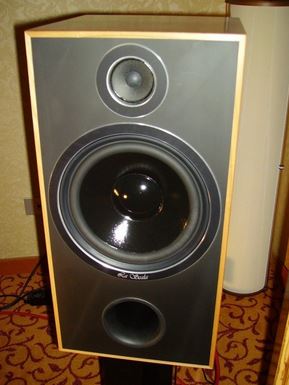
The midbass is the weakness, it doesn't really do what I like in the midrange. This is why a three way (here a Sony with classic low mechanical loss SEAS drivers) is better:
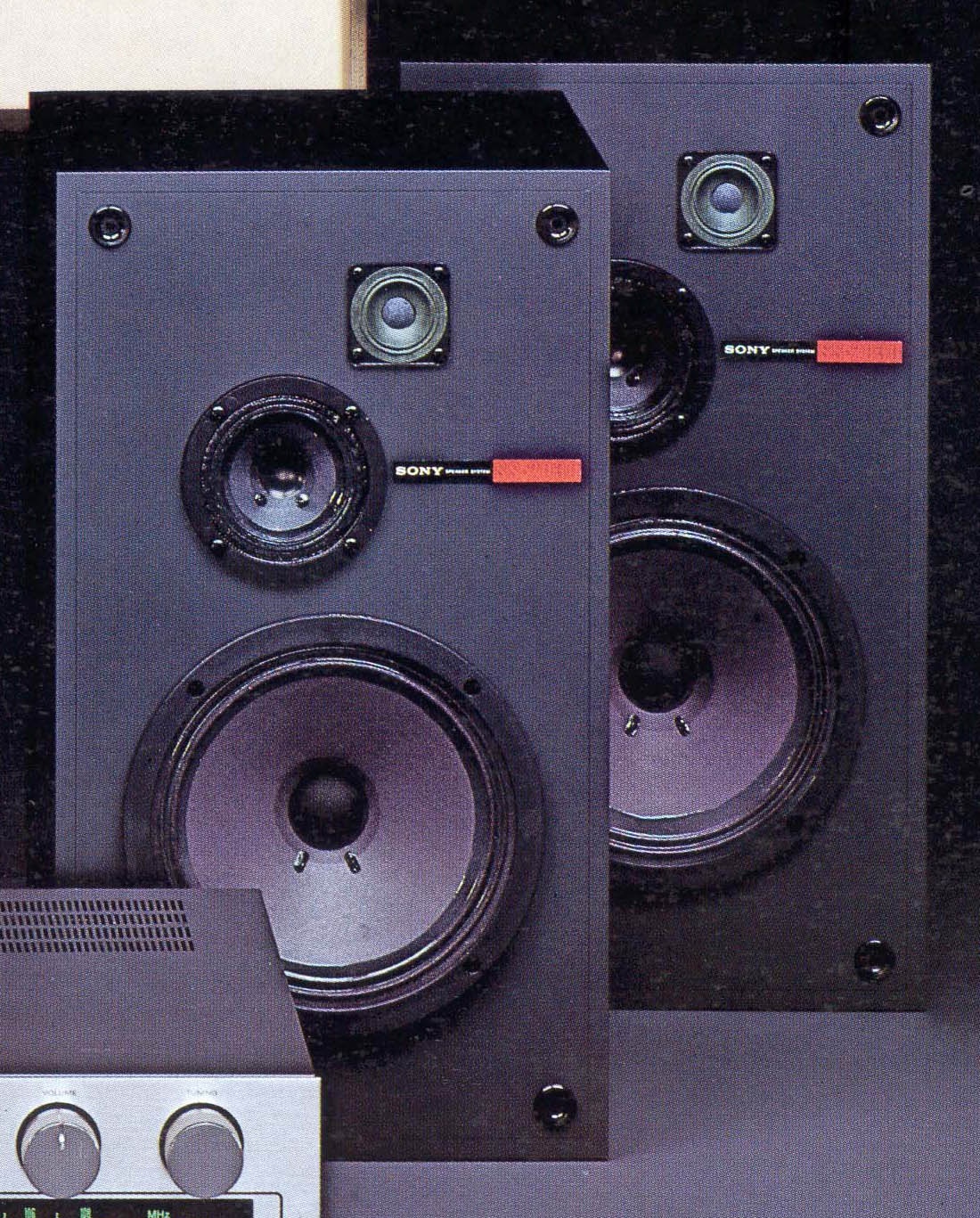
Both quite retro designs, but something to like in both.
Getting more modern, this is a very good way to build a speaker (that is Scanspeak 5" or 6" plus ribbon or AMT) which has the MTM PA projection that can sound good:

Spare that one bass duties and it can work beautifully. I have heard stuff like this with electronic LR4 filters.
Tweeter choice might be ribbons, ring radiators (Vifa XT25 or SB Acoustics) or even small cone tweeters like the Visaton TW 70. They are all high on musicality crossed above 3kHz.
Bass units can be what you like, but listen to Troels on low mechanical loss. You don't even have to throw a lot of money at that. I have a retro 8" Sony woofer (and Eminence still build woofers like this, for example the Eminence Alpha 8A unit) that is hard to beat on musicality:
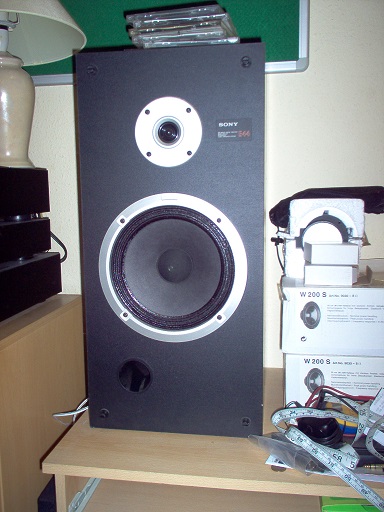
Don't go crazy on overly deep bass. Just enough for the size of the room, which always has a thing called room gain and will limit what is doable. It shouldn't intrude, just provide a foundation.
It's a complex subject.
We are talking direct radiating drivers here, not horn loaded PA speakers.
It's all about the midrange unit. With a three way, you can use a much more optimised design than a regular midbass. Shorter voicecoil, smaller excursion, low mechanical loss. Everything that makes for micro-detail. A good one is almost a fullrange unit, and in a smaller 8" bass 3 way, 4" paper cone is ideal.
This is why Troels has done such a good job on driver selection here:
ScanSpeak-3W-Discovery
I am currently playing with a two-way with approx. LR4 slopes:
The midbass is the weakness, it doesn't really do what I like in the midrange. This is why a three way (here a Sony with classic low mechanical loss SEAS drivers) is better:
Both quite retro designs, but something to like in both.
Getting more modern, this is a very good way to build a speaker (that is Scanspeak 5" or 6" plus ribbon or AMT) which has the MTM PA projection that can sound good:
Spare that one bass duties and it can work beautifully. I have heard stuff like this with electronic LR4 filters.
Tweeter choice might be ribbons, ring radiators (Vifa XT25 or SB Acoustics) or even small cone tweeters like the Visaton TW 70. They are all high on musicality crossed above 3kHz.
Bass units can be what you like, but listen to Troels on low mechanical loss. You don't even have to throw a lot of money at that. I have a retro 8" Sony woofer (and Eminence still build woofers like this, for example the Eminence Alpha 8A unit) that is hard to beat on musicality:
Don't go crazy on overly deep bass. Just enough for the size of the room, which always has a thing called room gain and will limit what is doable. It shouldn't intrude, just provide a foundation.
Last edited:
The major problem with three way active for the home user is getting sound levels correct. If you have access to the appropriate mics etc., then its possible. doing it by ear is tricky. Using two way with a passive xover for mid treble is manageable. My comments are based on experience.
It's a very good point. Your average passive crossover does far more than apply, say, a straightforward LR2 12dB/octave slope.
Cabinet effects need bafflestep correction. Driver responses aren't flat. Below is the default Boxsim project for a small 5" plus 1" system. A simple electronic LR2 at 2kHz won't hack it.
To get it to work, you need ruler flat drivers in their cabinets, and maybe let the bass and mid crossover exactly at the bafflestep point. Time alignment will also play a part in phase matching. I suppose this is why good electronic crossover systems are expensive.
Here's John Kreskovsky's designs: Offerings
Cabinet effects need bafflestep correction. Driver responses aren't flat. Below is the default Boxsim project for a small 5" plus 1" system. A simple electronic LR2 at 2kHz won't hack it.
To get it to work, you need ruler flat drivers in their cabinets, and maybe let the bass and mid crossover exactly at the bafflestep point. Time alignment will also play a part in phase matching. I suppose this is why good electronic crossover systems are expensive.
Here's John Kreskovsky's designs: Offerings
Attachments
The perfect speaker would be a 1 way. Unfortunately that is currently impossible to achieve. There are ideas about a 1 way plasma speaker which would be phenominal if it worked as planned.
In the real world we have to make compromises.
I'm an avid B&W fan as my Dad worked for them.
The DM602's were a two way design with nice bass and HF capability but the mid range was lacking.
The DM683's share the midrange with the Nautilus idea and the full voice becomes apparent.
Ultimately it comes down to the design.
In the real world we have to make compromises.
I'm an avid B&W fan as my Dad worked for them.
The DM602's were a two way design with nice bass and HF capability but the mid range was lacking.
The DM683's share the midrange with the Nautilus idea and the full voice becomes apparent.
Ultimately it comes down to the design.
Last edited:
- Status
- Not open for further replies.
- Home
- Loudspeakers
- Multi-Way
- Any benefits upgrade from 2 way to 3 way active speaker system?
